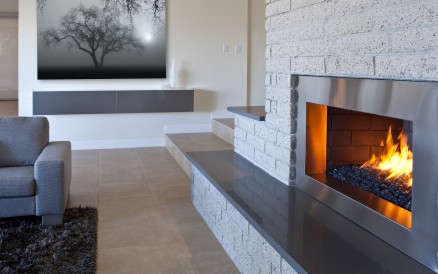[vc_row][vc_column width=”1/3″][dt_fancy_image type=”image” style=”1″ width=”270″ padding=”10″ margin_top=”0″ margin_bottom=”0″ margin_left=”0″ margin_right=”0″ align=”left” animation=”none” image=”http://www.kaufmanhomesinc.com/wp-content/uploads/kaufman-homes-how-to-create-a-safe-fire-in-your-fireplace-or-wood-stove.jpg” image_alt=”Safe Wood Fires” lightbox=”true”][dt_gap height=”20″][/vc_column][vc_column width=”2/3″][vc_column_text]
How to Create a Safe Fire in your Fireplace or Wood Stove
As a follow up to our article at the beginning of December 2011 on, preventing and minimizing fires in your home I thought it would be good to include a very important article on wood burning in your home. With the increasing natural gas and fuel oil heating costs, many homeowners are turning to wood burning stoves to keep their home warm. Beware, that while you are saving money, you may increase your risk of a home fire.
Over the years Kaufman homes has been involved in a few repairs of homes damaged mostly by chimneys with creosote buildup or a chimney that is in disrepair or was never built right in the first place. Luckily none of these homes had extensive damage as the fires were caught in the early stages.
Now that the weather has turned chilly and the Christmas season is here, we are more likely to stay home out of the cold decorating our tree, drinking hot cider and starting a nice cozy fire in our fireplace or woodstove.
When you get ready to light your first fire of the season, we want to remind you to take some precautions before you light a fire in your fireplace, fireplace insert or your woodstove.
Utilizing the following list of things below will give you confidence while burning wood in your home fireplace or woodstove making the smell of burning wood and the cozy warmth a much more enjoyable experience.
- Have your chimney or wood stove inspected and cleaned annually by a certified chimney specialist.
A chimney fire can be a frightening and dangerous experience as these fires produce loud crackling, rumbling or roaring noises and a red-hot stove pipe. These fires can spread to the building itself, causing serious loss and endangering the lives of you family.
Chimney fires are caused when creosote, a normal by-product of burning wood, collects on the inside of the chimney and is ignited. The causes of creosote buildup are flue temperature below 250 degrees allows creosote to condense, slow burning, smoldering fires cause creosote buildup, and burning unseasoned soft wood causes creosote accumulation.
If you do have a chimney fire, in spite of your precautions immediately call 911 and get everyone out of the house. Close the stove door, draft opening and damper to cut off air to the fire. Never throw water on a hot stove.
- Clear the area around the hearth of debris, decorations and flammable materials.
- Leave glass doors open while burning a fire ensures that the fire receives enough air to ensure complete combustion and keeps creosote from building up in the chimney.
- Close glass doors when the fire is out to keep air from the chimney opening from getting into the room. Most glass fireplace doors have a metal mesh screen which should be closed when the glass doors are open. This mesh screen helps keep embers from getting out of the fireplace area.
- Always use a metal mesh screen with fireplaces that do not have a glass fireplace door.
- Keep air inlets on wood stoves open, and never restrict air supply to fireplaces. Otherwise you may cause creosote buildup that could lead to a chimney fire.
- Use fire-resistant materials on walls around and under wood stoves.
Safely Burn Fuels
- Never use flammable liquids to start a fire.
- Use only seasoned hardwood. Soft, moist wood accelerates creosote buildup.
- Build small fires that burn completely and produce less smoke.
- Never burn cardboard boxes, trash or debris in your fireplace or wood stove.
- When building a fire, place logs at the rear of the fireplace on an adequate supporting grate.
- Never leave a fire in the fireplace unattended. Extinguish the fire before going to bed or leaving the house.
- Soak hot ashes in water and place them in a metal container outside your home.
Protect the Outside of Your Home
- Stack firewood outdoors at least 30 feet away from your home.
- Keep the roof clear of leaves, pine needles and other debris.
- Cover the chimney with a mesh screen spark arrester.
- Remove branches hanging above the chimney, flues or vents.
- Extend all vent pipes at least three feet above the roof.
Please don’t hesitate to call Kaufman Homes to get our recommendations for home fireplace installers.[/vc_column_text][dt_gap height=”10″][/vc_column][/vc_row]

